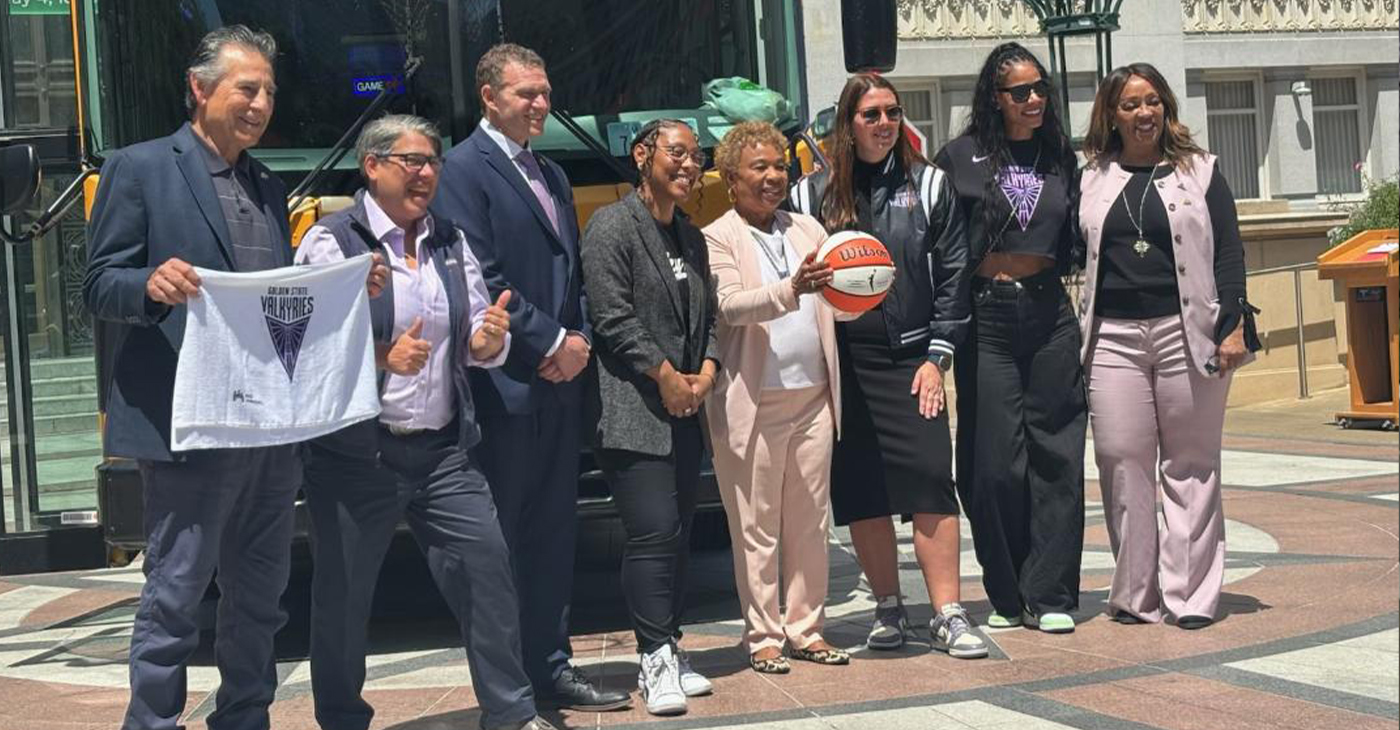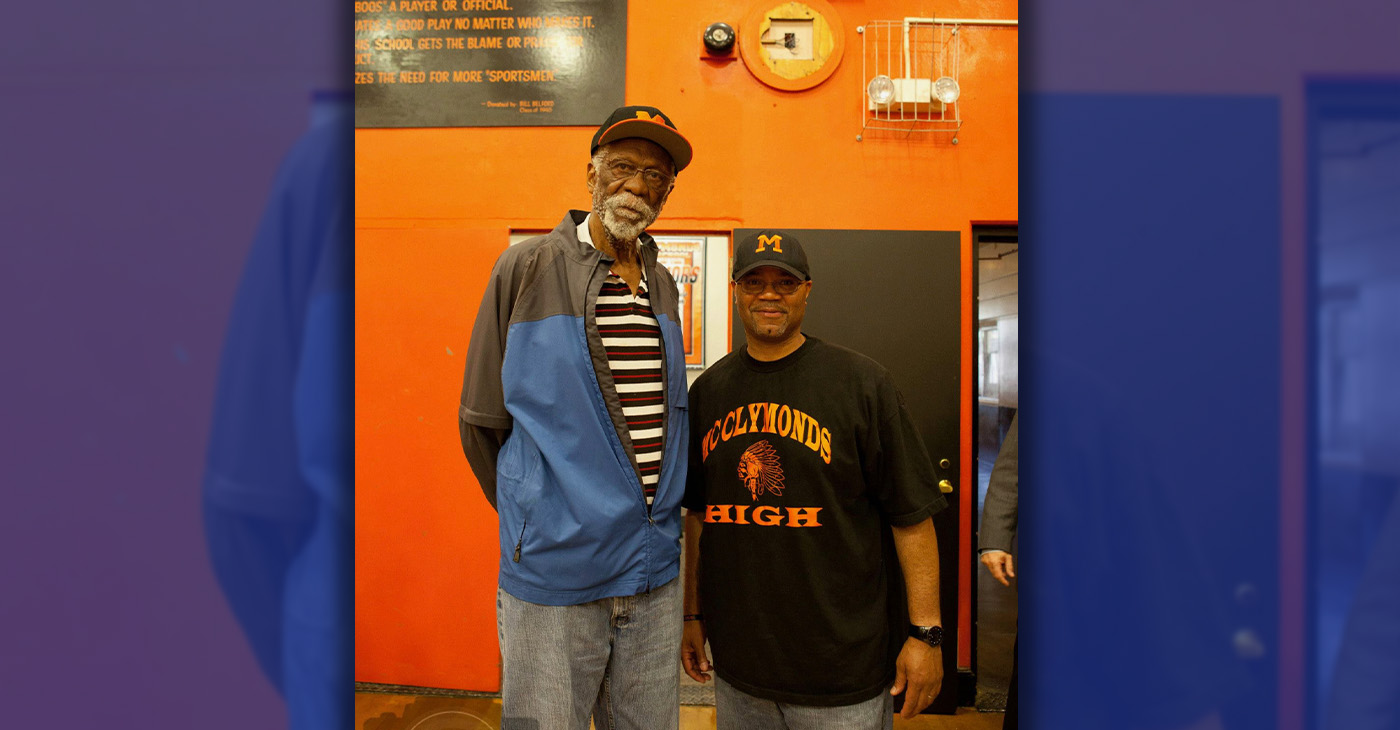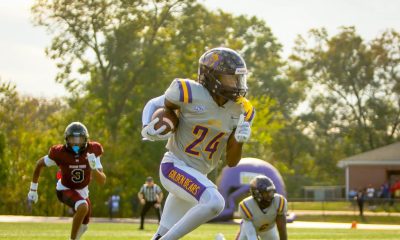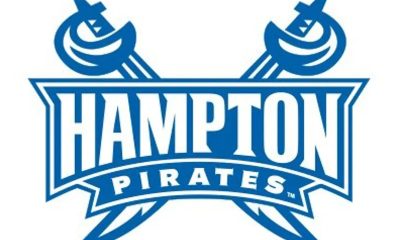Sports
At $75 a Game, Indoor Football Isn’t About the Money

In this photo from May 16, 2015, Omaha Beef players Jesse Robertson (9) and Demichael McWilliams (99) tackle Sioux City Bandits’ Fredrick Bruno (2) in a Champions Indoor Football league game in Sioux City, Iowa. (AP Photo/Nati Harnik)
ERIC OLSON, AP Sports Writer
OMAHA, Neb. (AP) — Chuck Wright was hooked the first time he tried professional indoor football. His pay for that game: a $10 bill and six-pack of Bud Light.
“If I never did anything else,” he said, “I could always say I got paid to play. It’s true.”
That was 10 years ago, and the 34-year-old is still going strong, now with a team called the Omaha Beef. It’s an eclectic mix of dreamers hoping to get noticed by a team in the Arena Football League, CFL or even the NFL and realists like Wright who know they’re going nowhere.
Each Beef player signs a contract promising $75 a game, and each will tell you it’s not really about the money.
Jesse Robertson and Davon Bridges are among the dreamers. They drove here together from the East Coast, took up residence at a motel and spend their days painting and cleaning apartments, working out and hanging out. They live for the two nights a week the Beef practice and the Friday or Saturday nights they play games. For them, the games are an opportunity to put their skills on film and send it to talent evaluators in more prestigious leagues.
Established in 1999, the Omaha-based team is the oldest indoor football team in the nation. The Beef found the spotlight a couple years ago when owner Rich Tokheim offered Tim Tebow a roster spot the day after he was cut by the New York Jets. The Beef’s quarterback at the time, James McNear, famously cracked, “I think Tim can learn a lot from me.”
Laugh if you will, but coach Cory Ross said the talent in the Beef’s league, Champions Indoor Football, is better than you think.
“You can see why some guys aren’t at the next level, but with other guys, you wonder why they haven’t gotten an opportunity,” said Ross, 32, who played running back for Nebraska and the Baltimore Ravens. “There are 2,500 college kids who come out as seniors, and only 255 get drafted. That’s a lot of football players trying to find a place to play. Some go to Canada, some go to the arena league. And then there are leagues like ours.”
CIF is one of five U.S. leagues with a total of 44 teams. The Indoor Football League, where players make better than $200 a game, is considered the best of the five and is one step from the AFL.
The eight-on-eight indoor game is played on a 50-yard field laid inside a hockey rink. Dasher boards, sans glass, are the sidelines, and the fans eat it up when receivers go up and over them to catch passes.
The Beef’s quirky nickname is a nod to Omaha’s reputation for great steaks. Their home is the Ralston Arena, aka “The Slaughterhouse,” where they draw about 2,800 a game heading into Saturday’s season finale. The female Prime Dancers and male Rump Roasters, along with a mascot named “Sir Loin,” provide in-game entertainment.
The booster club has been known to fill a 53-passenger bus, “The Meat Wagon,” for games hundreds of miles away. As the team has struggled to a 1-10 record this season, the road following has dwindled to only the most ardent fans, like the five tailgating two hours before kickoff a couple Saturdays ago in an otherwise empty parking lot at the Sioux City (Iowa) Bandits’ arena.
Wright, known as “Gunslinger,” was a three-year starter at now-closed Dana College in Blair, Nebraska, and works at Bellevue University near Omaha. He’s played in several indoor leagues and in his best season earned a total of $5,000, not to mention other forms of pay ranging from that six-pack of beer to vouchers for tattoos.
“I go out there to entertain people,” Wright said. “They’re not paying 10 or 20 bucks to see Chuck Wright the person. They’re paying 10 or 20 bucks to see the Gunslinger. It’s like a wrestling match. That’s what they want to see, someone getting lit up and thrown over the wall.”
Receiver Brandon Kinnie also is in it for the love of the game. He played at Nebraska and went to training camp with the Kansas City Chiefs in 2012. Now he works full-time as an assistant manager at a shoe store and part-time at a Nike outlet.
“I used to envy some of my good friends because they were playing in the NFL and I wasn’t, and I didn’t understand why I wasn’t there,” Kinnie said. “It just doesn’t happen for everybody. It’s OK. I’m enjoying the company I’m with now.”
Robertson and Bridges don’t mind living on the cheap if that’s what it takes to move to a higher level someday. Robertson led Division II in solo tackles for West Virginia Wesleyan in 2013, and Bridges was a three-year starter for FCS-level Villanova.
The Beef provide lodging at a Best Western motel for the handful of players who have no local ties. The team also gives them vouchers for meals at sponsor restaurants. The entire team meets on Fridays for a pregame meal of chicken wings at Hooters.
“Hey, if they’re offering to feed us, we’re going to eat it,” Bridges said. “There is no trying to eat healthy.”
Indoor football’s greatest success story is running back Fred Jackson, who played the 2004 and ’05 seasons for the Sioux City Bandits and in 2007 was starting for the Buffalo Bills. The CFL is a more realistic goal for the best indoor players, but even that’s a longshot.
Calgary Stampeders assistant general manager John Murphy said one or two players a year from indoor teams might make his team’s active roster or practice squad. He said he admires their willingness to sacrifice to pursue their passion.
So does Ross, who told his players as much during his pregame talk before their recent game at Sioux City.
“It’s another day to continue to do something you love,” he said, his voice raised. “Age waits for nobody.”
Copyright 2015 The Associated Press. All rights reserved. This material may not be published, broadcast, rewritten or redistributed.
Alameda County
Seth Curry Makes Impressive Debut with the Golden State Warriors
Seth looked comfortable in his new uniform, seamlessly fitting into the Warriors’ offensive and defensive system. He finished the night with an impressive 14 points, becoming one of the team’s top scorers for the game. Seth’s points came in a variety of ways – floaters, spot-up three-pointers, mid-range jumpers, and a handful of aggressive drives that kept the Oklahoma City Thunder defense on its heels.

By Y’Anad Burrell
Tuesday night was anything but ordinary for fans in San Francisco as Seth Curry made his highly anticipated debut as a new member of the Golden State Warriors. Seth didn’t disappoint, delivering a performance that not only showcased his scoring ability but also demonstrated his added value to the team.
At 35, the 12-year NBA veteran on Monday signed a contract to play with the Warriors for the rest of the season.
Seth looked comfortable in his new uniform, seamlessly fitting into the Warriors’ offensive and defensive system. He finished the night with an impressive 14 points, becoming one of the team’s top scorers for the game. Seth’s points came in a variety of ways – floaters, spot-up three-pointers, mid-range jumpers, and a handful of aggressive drives that kept the Oklahoma City Thunder defense on its heels.
One of the most memorable moments of the evening came before Seth even scored his first points. As he checked into the game, the Chase Center erupted into applause, with fans rising to their feet to give the newest Warrior a standing ovation.
The crowd’s reaction was a testament not only to Seth’s reputation as a sharpshooter but also to the excitement he brings to the Warriors. It was clear that fans quickly embraced Seth as one of their own, eager to see what he could bring to the team’s championship aspirations.
Warriors’ superstar Steph Curry – Seth’s brother – did not play due to an injury. One could only imagine what it would be like if the Curry brothers were on the court together. Magic in the making.
Seth’s debut proved to be a turning point for the Warriors. Not only did he contribute on the scoreboard, but he also brought a sense of confidence and composure to the floor.
While their loss last night, OKC 124 – GSW 112, Seth’s impact was a game-changer and there’s more yet to come. Beyond statistics, it was clear that Seth’s presence elevated the team’s performance, giving the Warriors a new force as they look to make a deep playoff run.
Barbara Lee
WNBA’s Golden State Valkyries Kick Off Season with Community Programs in Oakland
“The Golden State Valkyries are more than a team—they’re a movement,” said Oakland Interim-Mayor Kevin Jenkins. “Their touchdown in Oakland marks a new era of opportunity, inspiration, and equity in sports. This partnership reflects our city’s deep commitment to uplifting women, investing in youth, and building a community where every dream has a place to grow. We’re proud to welcome the Valkyries to The Town.”

Team installs new nets at playgrounds, holds flag-raisings at City Halls in Oakland and S.F.
Special to The Post
The Golden State Valkyries brought the excitement of their inaugural season to every corner of the Bay Area with a full slate of community celebrations leading up to their historic home-opener against the Los Angeles Sparks at the Chase Center in San Francisco on Friday.
The week featured flag-raising ceremonies at city halls in Oakland and San Francisco, three “Violet Net” installation days at Oakland parks to encourage basketball play, fun “Hoopbus” takeovers at multiple schools presented by Kaiser Permanente, and player appearances.
“The Golden State Valkyries are more than a team—they’re a movement,” said Oakland Interim-Mayor Kevin Jenkins. “Their touchdown in Oakland marks a new era of opportunity, inspiration, and equity in sports. This partnership reflects our city’s deep commitment to uplifting women, investing in youth, and building a community where every dream has a place to grow. We’re proud to welcome the Valkyries to The Town.”
In total, 90 violet nets were installed on 45 basketball courts across 34 public parks throughout Oakland this week. A list of the parks receiving violet nets can be found at Valkyries.com.
About the Golden State Valkyries
The Golden State Valkyries, the WNBA affiliate of the seven-time NBA Champion Golden State Warriors, were announced as the 13th WNBA franchise on Oct. 5, 2023. According to Norse mythology, Valkyries are a host of warrior women who are fearless and unwavering – flying through air and sea alike.
This brand is Golden State’s modern interpretation of Valkyries: strong, bold, and fierce. Tipping off during the 2025 WNBA season, the team is headquartered in Oakland and will play home games at Chase Center in San Francisco. For Golden State Valkyries’ assets, including team logos, visit valkyries.com.
Activism
McClymonds High Names School Gym for Star Graduate, Basketball Legend Bill Russell
William “Bill” Felton Russell was born on Feb. 12, 1934, and died on July 31, 2022. He achieved fame as a U.S. professional basketball player who played center for the Boston Celtics of the National Basketball Association (NBA) from 1956 to 1969. He was the centerpiece of the Celtics dynasty that won 11 NBA championships during his 13-year career.

By Ken Epstein
West Oakland’s McClymonds High School, “the School of Champions,” this week named the school’s gymnasium in honor of one of its most famous graduates, basketball legend Bill Russell (class of ’52).
William “Bill” Felton Russell was born on Feb. 12, 1934, and died on July 31, 2022. He achieved fame as a U.S. professional basketball player who played center for the Boston Celtics of the National Basketball Association (NBA) from 1956 to 1969. He was the centerpiece of the Celtics dynasty that won 11 NBA championships during his 13-year career.
Russell is widely known as one of the greatest basketball players of all time. In 2011, he received the Presidential Medal of Freedom, the country’s highest civil honor, from President Barack Obama for Russell’s contributions to basketball and the Civil Rights Movement.
The McClymonds’ naming ceremony was held on Wednesday, the same day as Russell’s birthday. Oakland leader Bill Patterson, a longtime friend of Russell’s, was scheduled to cut the ribbon at the reopening of the gym, which had been closed for several months for renovation. Russell’s daughter Karen was scheduled to attend the ribbon cutting.
Russell’s name and signature are now printed on the gymnasium floor.
Patterson was working at DeFremery Park when he met Russell. “I befriended him as a boy and during his years at University of San Francisco” said Patterson. “We stayed friends for the rest of his life.”
Said McClymonds Principal Darielle Davis, herself a McClymonds graduate, “We are excited to honor Bill Russell for his sports accolades and because he broke color barriers. He is part of our legacy, and legacy is really important at McClymonds.”
Brian McGhee, community schools manager at McClymonds and former football player at UC Berkeley, said that Russell meant a lot to him and others at the school. “He was a beacon of light and hope for West Oakland,” he said. “He did a lot for sports and for civil rights.”
Starting in 2018, Ben “Coach” Tapscott worked with Patterson and other McClymonds grads, community members, and former coaches to encourage the Oakland Board of Education to endorse the naming of the school gym, which finally happened recently.
“We worked hard to make this happen,” said Tapscott. “He’s an important part of McClymond’s history, along with a lot of other famous graduates,” he said.
-

 #NNPA BlackPress4 weeks ago
#NNPA BlackPress4 weeks agoLIHEAP Funds Released After Weeks of Delay as States and the District Rush to Protect Households from the Cold
-

 Activism4 weeks ago
Activism4 weeks agoOakland Post: Week of November 26 – December 2, 2025
-

 Alameda County3 weeks ago
Alameda County3 weeks agoSeth Curry Makes Impressive Debut with the Golden State Warriors
-

 #NNPA BlackPress4 weeks ago
#NNPA BlackPress4 weeks agoSeven Steps to Help Your Child Build Meaningful Connections
-

 #NNPA BlackPress4 weeks ago
#NNPA BlackPress4 weeks agoSeven Steps to Help Your Child Build Meaningful Connections
-

 #NNPA BlackPress4 weeks ago
#NNPA BlackPress4 weeks agoTrinidad and Tobago – Prime Minister Confirms U.S. Marines Working on Tobago Radar System
-

 #NNPA BlackPress4 weeks ago
#NNPA BlackPress4 weeks agoThanksgiving Celebrated Across the Tri-State
-

 #NNPA BlackPress4 weeks ago
#NNPA BlackPress4 weeks agoTeens Reject Today’s News as Trump Intensifies His Assault on the Press
Sports
At $75 a Game, Indoor Football Isn’t About the Money

In this photo from May 16, 2015, Omaha Beef players Jesse Robertson (9) and Demichael McWilliams (99) tackle Sioux City Bandits’ Fredrick Bruno (2) in a Champions Indoor Football league game in Sioux City, Iowa. (AP Photo/Nati Harnik)
ERIC OLSON, AP Sports Writer
OMAHA, Neb. (AP) — Chuck Wright was hooked the first time he tried professional indoor football. His pay for that game: a $10 bill and six-pack of Bud Light.
“If I never did anything else,” he said, “I could always say I got paid to play. It’s true.”
That was 10 years ago, and the 34-year-old is still going strong, now with a team called the Omaha Beef. It’s an eclectic mix of dreamers hoping to get noticed by a team in the Arena Football League, CFL or even the NFL and realists like Wright who know they’re going nowhere.
Each Beef player signs a contract promising $75 a game, and each will tell you it’s not really about the money.
Jesse Robertson and Davon Bridges are among the dreamers. They drove here together from the East Coast, took up residence at a motel and spend their days painting and cleaning apartments, working out and hanging out. They live for the two nights a week the Beef practice and the Friday or Saturday nights they play games. For them, the games are an opportunity to put their skills on film and send it to talent evaluators in more prestigious leagues.
Established in 1999, the Omaha-based team is the oldest indoor football team in the nation. The Beef found the spotlight a couple years ago when owner Rich Tokheim offered Tim Tebow a roster spot the day after he was cut by the New York Jets. The Beef’s quarterback at the time, James McNear, famously cracked, “I think Tim can learn a lot from me.”
Laugh if you will, but coach Cory Ross said the talent in the Beef’s league, Champions Indoor Football, is better than you think.
“You can see why some guys aren’t at the next level, but with other guys, you wonder why they haven’t gotten an opportunity,” said Ross, 32, who played running back for Nebraska and the Baltimore Ravens. “There are 2,500 college kids who come out as seniors, and only 255 get drafted. That’s a lot of football players trying to find a place to play. Some go to Canada, some go to the arena league. And then there are leagues like ours.”
CIF is one of five U.S. leagues with a total of 44 teams. The Indoor Football League, where players make better than $200 a game, is considered the best of the five and is one step from the AFL.
The eight-on-eight indoor game is played on a 50-yard field laid inside a hockey rink. Dasher boards, sans glass, are the sidelines, and the fans eat it up when receivers go up and over them to catch passes.
The Beef’s quirky nickname is a nod to Omaha’s reputation for great steaks. Their home is the Ralston Arena, aka “The Slaughterhouse,” where they draw about 2,800 a game heading into Saturday’s season finale. The female Prime Dancers and male Rump Roasters, along with a mascot named “Sir Loin,” provide in-game entertainment.
The booster club has been known to fill a 53-passenger bus, “The Meat Wagon,” for games hundreds of miles away. As the team has struggled to a 1-10 record this season, the road following has dwindled to only the most ardent fans, like the five tailgating two hours before kickoff a couple Saturdays ago in an otherwise empty parking lot at the Sioux City (Iowa) Bandits’ arena.
Wright, known as “Gunslinger,” was a three-year starter at now-closed Dana College in Blair, Nebraska, and works at Bellevue University near Omaha. He’s played in several indoor leagues and in his best season earned a total of $5,000, not to mention other forms of pay ranging from that six-pack of beer to vouchers for tattoos.
“I go out there to entertain people,” Wright said. “They’re not paying 10 or 20 bucks to see Chuck Wright the person. They’re paying 10 or 20 bucks to see the Gunslinger. It’s like a wrestling match. That’s what they want to see, someone getting lit up and thrown over the wall.”
Receiver Brandon Kinnie also is in it for the love of the game. He played at Nebraska and went to training camp with the Kansas City Chiefs in 2012. Now he works full-time as an assistant manager at a shoe store and part-time at a Nike outlet.
“I used to envy some of my good friends because they were playing in the NFL and I wasn’t, and I didn’t understand why I wasn’t there,” Kinnie said. “It just doesn’t happen for everybody. It’s OK. I’m enjoying the company I’m with now.”
Robertson and Bridges don’t mind living on the cheap if that’s what it takes to move to a higher level someday. Robertson led Division II in solo tackles for West Virginia Wesleyan in 2013, and Bridges was a three-year starter for FCS-level Villanova.
The Beef provide lodging at a Best Western motel for the handful of players who have no local ties. The team also gives them vouchers for meals at sponsor restaurants. The entire team meets on Fridays for a pregame meal of chicken wings at Hooters.
“Hey, if they’re offering to feed us, we’re going to eat it,” Bridges said. “There is no trying to eat healthy.”
Indoor football’s greatest success story is running back Fred Jackson, who played the 2004 and ’05 seasons for the Sioux City Bandits and in 2007 was starting for the Buffalo Bills. The CFL is a more realistic goal for the best indoor players, but even that’s a longshot.
Calgary Stampeders assistant general manager John Murphy said one or two players a year from indoor teams might make his team’s active roster or practice squad. He said he admires their willingness to sacrifice to pursue their passion.
So does Ross, who told his players as much during his pregame talk before their recent game at Sioux City.
“It’s another day to continue to do something you love,” he said, his voice raised. “Age waits for nobody.”
Copyright 2015 The Associated Press. All rights reserved. This material may not be published, broadcast, rewritten or redistributed.
Alameda County
Seth Curry Makes Impressive Debut with the Golden State Warriors
Seth looked comfortable in his new uniform, seamlessly fitting into the Warriors’ offensive and defensive system. He finished the night with an impressive 14 points, becoming one of the team’s top scorers for the game. Seth’s points came in a variety of ways – floaters, spot-up three-pointers, mid-range jumpers, and a handful of aggressive drives that kept the Oklahoma City Thunder defense on its heels.

By Y’Anad Burrell
Tuesday night was anything but ordinary for fans in San Francisco as Seth Curry made his highly anticipated debut as a new member of the Golden State Warriors. Seth didn’t disappoint, delivering a performance that not only showcased his scoring ability but also demonstrated his added value to the team.
At 35, the 12-year NBA veteran on Monday signed a contract to play with the Warriors for the rest of the season.
Seth looked comfortable in his new uniform, seamlessly fitting into the Warriors’ offensive and defensive system. He finished the night with an impressive 14 points, becoming one of the team’s top scorers for the game. Seth’s points came in a variety of ways – floaters, spot-up three-pointers, mid-range jumpers, and a handful of aggressive drives that kept the Oklahoma City Thunder defense on its heels.
One of the most memorable moments of the evening came before Seth even scored his first points. As he checked into the game, the Chase Center erupted into applause, with fans rising to their feet to give the newest Warrior a standing ovation.
The crowd’s reaction was a testament not only to Seth’s reputation as a sharpshooter but also to the excitement he brings to the Warriors. It was clear that fans quickly embraced Seth as one of their own, eager to see what he could bring to the team’s championship aspirations.
Warriors’ superstar Steph Curry – Seth’s brother – did not play due to an injury. One could only imagine what it would be like if the Curry brothers were on the court together. Magic in the making.
Seth’s debut proved to be a turning point for the Warriors. Not only did he contribute on the scoreboard, but he also brought a sense of confidence and composure to the floor.
While their loss last night, OKC 124 – GSW 112, Seth’s impact was a game-changer and there’s more yet to come. Beyond statistics, it was clear that Seth’s presence elevated the team’s performance, giving the Warriors a new force as they look to make a deep playoff run.
Barbara Lee
WNBA’s Golden State Valkyries Kick Off Season with Community Programs in Oakland
“The Golden State Valkyries are more than a team—they’re a movement,” said Oakland Interim-Mayor Kevin Jenkins. “Their touchdown in Oakland marks a new era of opportunity, inspiration, and equity in sports. This partnership reflects our city’s deep commitment to uplifting women, investing in youth, and building a community where every dream has a place to grow. We’re proud to welcome the Valkyries to The Town.”

Team installs new nets at playgrounds, holds flag-raisings at City Halls in Oakland and S.F.
Special to The Post
The Golden State Valkyries brought the excitement of their inaugural season to every corner of the Bay Area with a full slate of community celebrations leading up to their historic home-opener against the Los Angeles Sparks at the Chase Center in San Francisco on Friday.
The week featured flag-raising ceremonies at city halls in Oakland and San Francisco, three “Violet Net” installation days at Oakland parks to encourage basketball play, fun “Hoopbus” takeovers at multiple schools presented by Kaiser Permanente, and player appearances.
“The Golden State Valkyries are more than a team—they’re a movement,” said Oakland Interim-Mayor Kevin Jenkins. “Their touchdown in Oakland marks a new era of opportunity, inspiration, and equity in sports. This partnership reflects our city’s deep commitment to uplifting women, investing in youth, and building a community where every dream has a place to grow. We’re proud to welcome the Valkyries to The Town.”
In total, 90 violet nets were installed on 45 basketball courts across 34 public parks throughout Oakland this week. A list of the parks receiving violet nets can be found at Valkyries.com.
About the Golden State Valkyries
The Golden State Valkyries, the WNBA affiliate of the seven-time NBA Champion Golden State Warriors, were announced as the 13th WNBA franchise on Oct. 5, 2023. According to Norse mythology, Valkyries are a host of warrior women who are fearless and unwavering – flying through air and sea alike.
This brand is Golden State’s modern interpretation of Valkyries: strong, bold, and fierce. Tipping off during the 2025 WNBA season, the team is headquartered in Oakland and will play home games at Chase Center in San Francisco. For Golden State Valkyries’ assets, including team logos, visit valkyries.com.
Activism
McClymonds High Names School Gym for Star Graduate, Basketball Legend Bill Russell
William “Bill” Felton Russell was born on Feb. 12, 1934, and died on July 31, 2022. He achieved fame as a U.S. professional basketball player who played center for the Boston Celtics of the National Basketball Association (NBA) from 1956 to 1969. He was the centerpiece of the Celtics dynasty that won 11 NBA championships during his 13-year career.

By Ken Epstein
West Oakland’s McClymonds High School, “the School of Champions,” this week named the school’s gymnasium in honor of one of its most famous graduates, basketball legend Bill Russell (class of ’52).
William “Bill” Felton Russell was born on Feb. 12, 1934, and died on July 31, 2022. He achieved fame as a U.S. professional basketball player who played center for the Boston Celtics of the National Basketball Association (NBA) from 1956 to 1969. He was the centerpiece of the Celtics dynasty that won 11 NBA championships during his 13-year career.
Russell is widely known as one of the greatest basketball players of all time. In 2011, he received the Presidential Medal of Freedom, the country’s highest civil honor, from President Barack Obama for Russell’s contributions to basketball and the Civil Rights Movement.
The McClymonds’ naming ceremony was held on Wednesday, the same day as Russell’s birthday. Oakland leader Bill Patterson, a longtime friend of Russell’s, was scheduled to cut the ribbon at the reopening of the gym, which had been closed for several months for renovation. Russell’s daughter Karen was scheduled to attend the ribbon cutting.
Russell’s name and signature are now printed on the gymnasium floor.
Patterson was working at DeFremery Park when he met Russell. “I befriended him as a boy and during his years at University of San Francisco” said Patterson. “We stayed friends for the rest of his life.”
Said McClymonds Principal Darielle Davis, herself a McClymonds graduate, “We are excited to honor Bill Russell for his sports accolades and because he broke color barriers. He is part of our legacy, and legacy is really important at McClymonds.”
Brian McGhee, community schools manager at McClymonds and former football player at UC Berkeley, said that Russell meant a lot to him and others at the school. “He was a beacon of light and hope for West Oakland,” he said. “He did a lot for sports and for civil rights.”
Starting in 2018, Ben “Coach” Tapscott worked with Patterson and other McClymonds grads, community members, and former coaches to encourage the Oakland Board of Education to endorse the naming of the school gym, which finally happened recently.
“We worked hard to make this happen,” said Tapscott. “He’s an important part of McClymond’s history, along with a lot of other famous graduates,” he said.
-

 #NNPA BlackPress4 weeks ago
#NNPA BlackPress4 weeks agoLIHEAP Funds Released After Weeks of Delay as States and the District Rush to Protect Households from the Cold
-

 Activism4 weeks ago
Activism4 weeks agoOakland Post: Week of November 26 – December 2, 2025
-

 Alameda County3 weeks ago
Alameda County3 weeks agoSeth Curry Makes Impressive Debut with the Golden State Warriors
-

 #NNPA BlackPress4 weeks ago
#NNPA BlackPress4 weeks agoSeven Steps to Help Your Child Build Meaningful Connections
-

 #NNPA BlackPress4 weeks ago
#NNPA BlackPress4 weeks agoSeven Steps to Help Your Child Build Meaningful Connections
-

 #NNPA BlackPress4 weeks ago
#NNPA BlackPress4 weeks agoTrinidad and Tobago – Prime Minister Confirms U.S. Marines Working on Tobago Radar System
-

 #NNPA BlackPress4 weeks ago
#NNPA BlackPress4 weeks agoThanksgiving Celebrated Across the Tri-State
-

 #NNPA BlackPress4 weeks ago
#NNPA BlackPress4 weeks agoTeens Reject Today’s News as Trump Intensifies His Assault on the Press
























































Leave a Reply